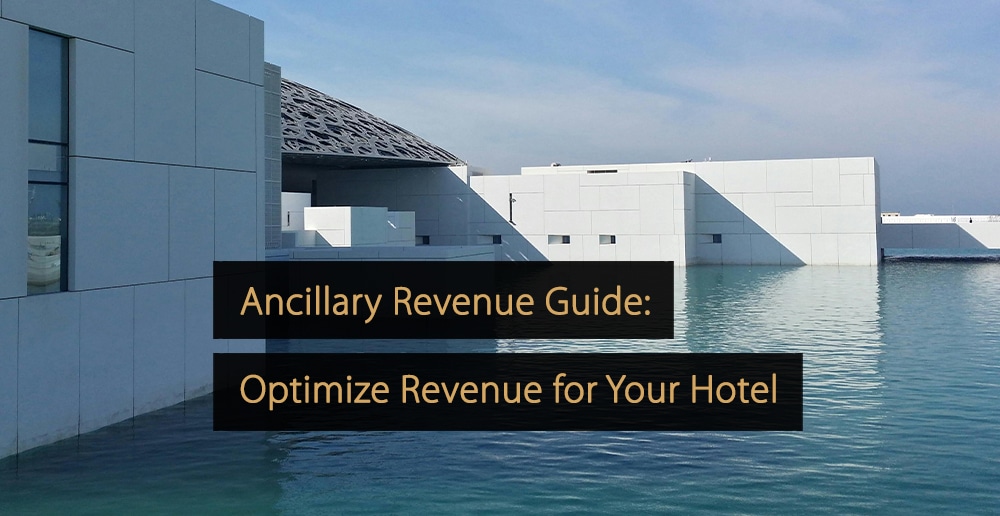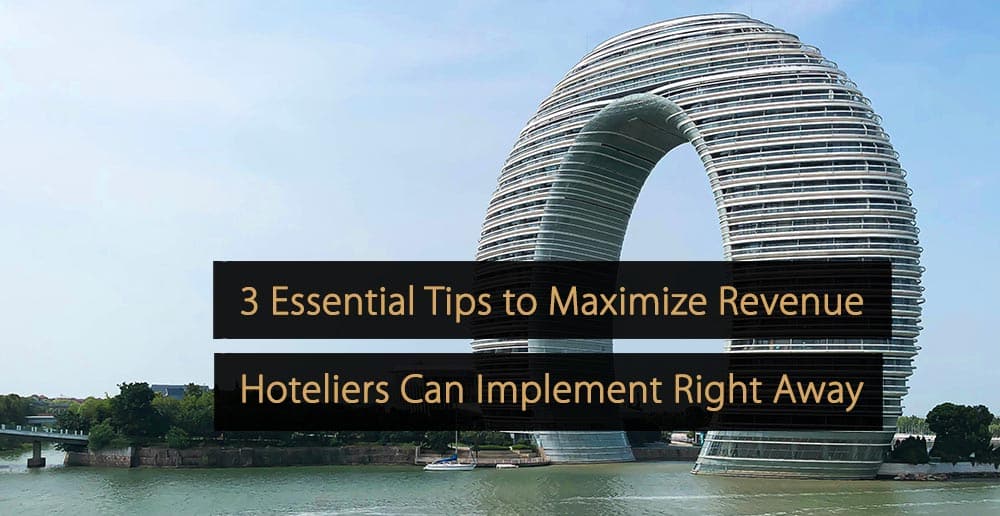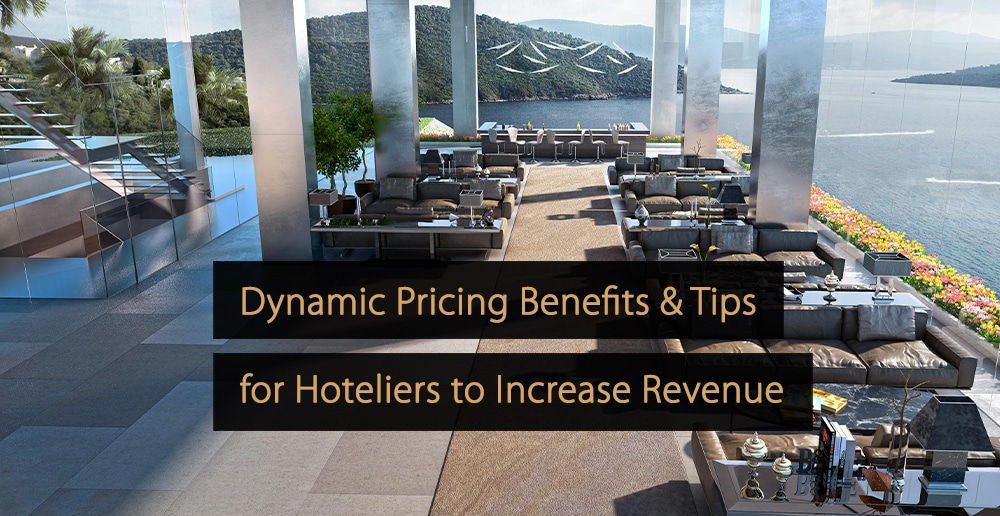Open pricing is an increasingly important strategy for increasing hotel revenue. It allows hotels to target various customers across different budgets, maximizing revenue and raising occupation levels all year round. With open pricing, rates, and services can be pitched optimally to ensure maximum uptake without compromising quality. In this article, you’ll learn how this pricing strategy can work for you.
Table of Contents:
- What is the Open Pricing Model in Hotel Revenue Management?
- Best-Available-Rate (BAR) vs. Open Pricing
- 3 Benefits of Using Open Pricing for Hotels
- How to Implement a Hotel Open Pricing Strategy
- Approving an Open Pricing Model
- Tips for Revenue Management
- More Insight into Pricing Strategies
- What Revenue Management Means
What Is the Open Pricing Model in Hotel Revenue Management?
Open pricing differs from BAR (best available rate), which most hotels use. Using an incremental range of price points along a demand curve, open-pricing hotel revenue management strategies allow hotels to offer their rooms at an attractive rate regardless of the season or other circumstances. Using this model, hotels never need to miss out on a potential distribution channel or a profitable offer. As long as a room can be booked, it can be filled at a realistic rate. This benefits both the hotel, which can maximize revenue, and the customer, who receives an attractive deal.
Video: Inside the Hotel Pricing Game
Best-Available-Rate (BAR) vs. Open Pricing
Open pricing revenue management strategies operate differently from conventional BAR pricing. Most hotels use a fixed-tier strategy to manage revenue. They establish a basic rate — typically the lowest price that customers might find shown publicly. The hotel’s other rates are adjusted around this price point, normally using a percentage difference relative to the BAR. The BAR itself may be dynamic, changing in response to real-time supply and demand shifts; however, the other rates remain fixed.
This kind of fixed-tier revenue strategy has problems exacerbated by other common hotel revenue practices. Other segments are often managed based on the best available rate, with loyalty reward recipients, groups, etc., being given prices based on a percentage of the BAR. This means the hotel is not pricing according to customer behavior among those booking via various channels. Instead, open pricing allows hotels to maximize revenue by applying a flexible strategy across all rates.
Table: Differences Between Best-Available-Rate (BAR) & Open Pricing
3 Benefits of Using Open Pricing for Hotels
The pricing strategy has three major benefits: flexibility, revenue capture, and independent room pricing.
1. Flexibility
An open pricing approach doesn’t treat rates as fixed and invariable. Prices may sometimes need to be set at differing levels when the situation demands it. With a variety of target markets and channels for distribution, an approach that allows rates to be tailored more specifically can be very useful. It is also perfect for independently owned hotels, large groups, and chains that can effectively utilize the flexibility offered by an open pricing approach. Hotel revenue management teams also have more freedom to adjust prices in response to changing circumstances. This kind of flexibility is increasingly important in the hospitality industry.
2. Capture the Entire Revenue Opportunity
Open pricing allows hotels to capture more of the available revenue. With a wider range of price points, it’s much easier to avoid losing potential customers who might be frustrated by the lack of a price point that meets their needs and budget. Revenue management refers to finding each customer the correct room at the correct price when they book. With open pricing, you can take the customer’s perception of the accommodation’s value as the basic rate. Different key performance indicators can be factored into the pricing strategy.
3. Price Different Room Types Independently
Open pricing allows for each type of room to be priced independently rather than relatively. Instead of basing rates on a specific amount, rooms can be priced based on demand. As with BAR strategies and discounted rates, many hotels use a strategy of pricing rooms relative to the rate for a basic room type. Thus, a suite might always be priced at the rate for a basic room plus a certain amount. Instead, it might be more useful to price the different room types independently to capture more revenue from travelers who will value the amenities of a suite more highly.
How to Implement a Hotel Open Pricing Strategy
This pricing strategy might initially look very complicated to implement. However, hotel technology changes mean that hotels wishing to use open pricing now have software solutions that can simplify the process. Revenue strategy, central reservation, and property management systems can be integrated to streamline the process and allow a complex range of factors to calculate the rates for each room. Where systems aren’t yet in place to allow this, it’s still possible for hotels to implement open pricing manually. In these cases, the hotel management can set up a range of segments and change the rates for specific date ranges.

Approving an Open Pricing Model
One problem may arise in obtaining approval for implementing an open pricing model. Regulatory bodies may have questions regarding the constant changes in price. Compliance is fairly simple, however. Hotels should specify the minimum and maximum values for each category in the pricing order and then provide an explanation that dynamic pricing is being implemented. In the marketing policy, it is already made clear that prices will change based on factors such as the season, local events, etc. The minimum and maximum prices can be adjusted according to market trends in a given quarter.
Tips for Revenue Management
Effective revenue management is a key factor in the success of any hotel business. If you’ve been inspired to learn more about open pricing and optimizing financial performance, you’ll be interested in “Revenue Management Tips for Hotels”.
In this article, you’ll learn about the importance of following hotel trends and customer habits, forecasting demand, and promoting a revenue culture within a hotel. You’ll learn about hotel technology related to revenue: the best ways to deploy hotel automation and how optimizing for mobile can boost your hotel’s income.
More Insight into Pricing Strategies
If finding out about open pricing has whetted your appetite, here are even more pricing strategy tips you can use today to optimize revenue and boost your hotel’s financial performance. In “Pricing Strategies to Increase Your Hotel Revenue”, you’ll learn how to use forecasting to craft your pricing strategy, how discount codes can stimulate more bookings, how offering packages can attract more revenue, and how review management can improve your hotel’s profile.
You’ll learn the secrets of upselling and cross-selling, how price per segment can attract guests and optimize rates, and how to ensure you’re offering your guests the best deals while maximizing revenue.
What Revenue Management Means
You’ve read a lot about hotel revenue management in the above article on open pricing. Some may be left wondering: just what is revenue management, anyhow? In “What Is Revenue Management?”, you’ll find the answers to your questions about the topic.
You’ll learn why revenue management is so important in the hotel industry and how it lets hotel owners and managers anticipate demand, optimize pricing, and ensure availability. You’ll learn how revenue management works and key performance indicators and get some crucial advice on developing your own strategies and approaches.
Open Pricing FAQs
Open pricing is just one of many hotel marketing trends in play right now — but it could be among the most important. If you want to ensure optimal income from each room, it might just be the strategy for your hotel.
Did You Like This Article About Open Pricing?
You might also be interested in the following articles:
- Reasons You Can Benefit From a Freelancer Revenue Manager
- Hotel Room Types & Room Pricing Tips for Hoteliers
- Revenue Management vs Yield Management
- Forecasting Tips to Improve Your Revenue Management Strategy
- The Most Used Revenue Management KPIs for Hotels
More Tips to Grow Your Business
Revfine.com is a knowledge platform for the hospitality & travel industry. Professionals use our insights, strategies and actionable tips to get inspired, optimise revenue, innovate processes and improve customer experience. You can find all hotel & hospitality tips in the categories Revenue Management, Marketing & Distribution, Hotel Operations, Staffing & Career, Technology and Software.This article is written by:
Hi, I am Martijn Barten, founder of Revfine.com. With 20 years of experience in the hospitality industry, I specialize in optimizing revenue by combining revenue management with marketing strategies. I have successfully developed, implemented, and managed revenue management and marketing strategies for individual properties and multi-property portfolios.









Thank you. Very interesting article about open pricing.